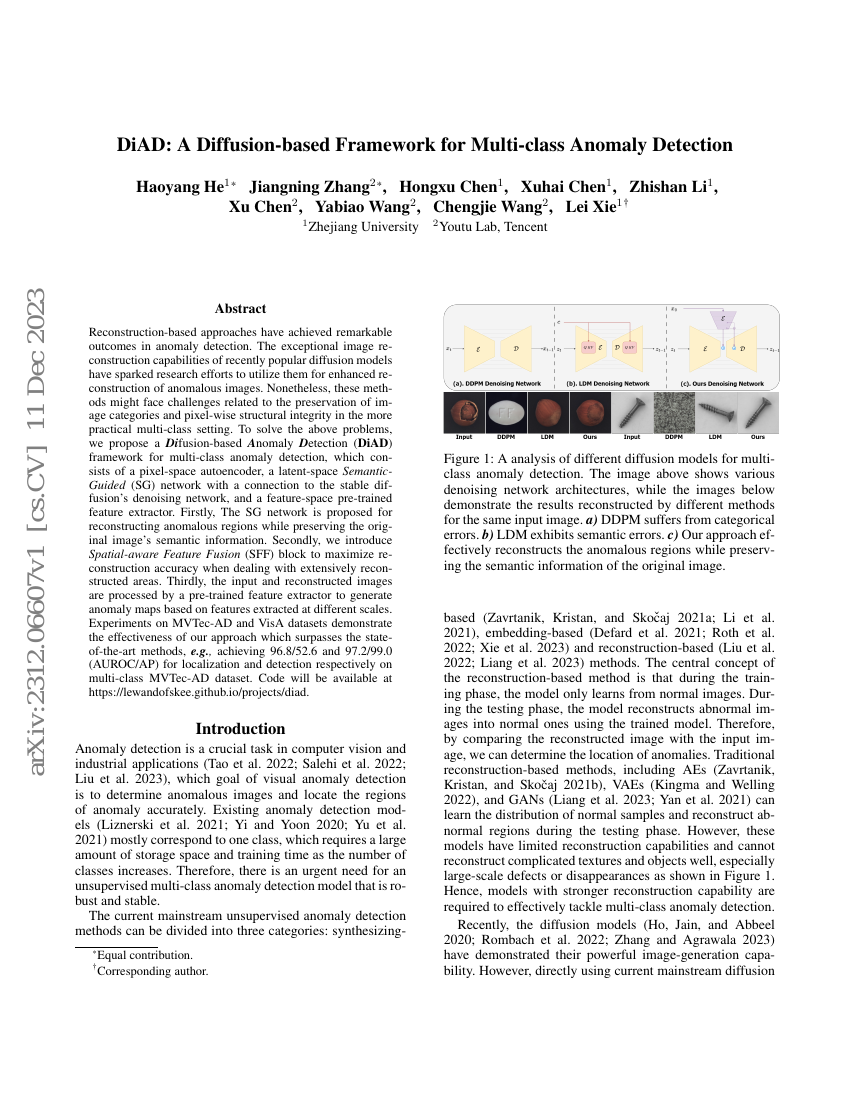Command Palette
Search for a command to run...
He Haoyang ; Zhang Jiangning ; Chen Hongxu ; Chen Xuhai ; Li Zhishan ; Chen Xu ; Wang Yabiao ; Wang Chengjie ; Xie Lei

Abstract
Reconstruction-based approaches have achieved remarkable outcomes in anomalydetection. The exceptional image reconstruction capabilities of recentlypopular diffusion models have sparked research efforts to utilize them forenhanced reconstruction of anomalous images. Nonetheless, these methods mightface challenges related to the preservation of image categories and pixel-wisestructural integrity in the more practical multi-class setting. To solve theabove problems, we propose a Difusion-based Anomaly Detection (DiAD) frameworkfor multi-class anomaly detection, which consists of a pixel-space autoencoder,a latent-space Semantic-Guided (SG) network with a connection to the stablediffusion's denoising network, and a feature-space pre-trained featureextractor. Firstly, The SG network is proposed for reconstructing anomalousregions while preserving the original image's semantic information. Secondly,we introduce Spatial-aware Feature Fusion (SFF) block to maximizereconstruction accuracy when dealing with extensively reconstructed areas.Thirdly, the input and reconstructed images are processed by a pre-trainedfeature extractor to generate anomaly maps based on features extracted atdifferent scales. Experiments on MVTec-AD and VisA datasets demonstrate theeffectiveness of our approach which surpasses the state-of-the-art methods,e.g., achieving 96.8/52.6 and 97.2/99.0 (AUROC/AP) for localization anddetection respectively on multi-class MVTec-AD dataset. Code will be availableat https://lewandofskee.github.io/projects/diad.
Code Repositories
Benchmarks
| Benchmark | Methodology | Metrics |
|---|---|---|
| multi-class-anomaly-detection-on-mvtec-ad | DiAD | Detection AUROC: 97.2 Segmentation AUROC: 96.8 |
Build AI with AI
From idea to launch — accelerate your AI development with free AI co-coding, out-of-the-box environment and best price of GPUs.